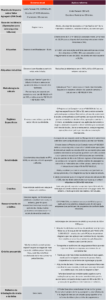The approved Tax Reform substantially changed the Brazilian taxation model, completely transforming the national tax collection system.
During the period of approval of the final text, all sectors were aware of the possible impacts, since the Reform directly and globally affects the country’s economy. Among these sectors, e-commerce is one that deserves to be highlighted.
According to data provided by the Brazilian Federal Revenue Service, e-commerce accounts for 40% of sales in Latin America, and it is worth noting that the domestic market has undergone several changes in recent years in order to modernize and compete with the Asian giants.
E-commerce has become increasingly important around the world. In Brazil, the market trend is no different. According to data from Ebit, this type of commerce earned approximately R$161 billion in 2023 alone, currently representing around 11% of total Brazilian retail sales, and this percentage is growing every year.
In this context, with the simplification of the national tax system, e-commerce will significantly reduce the administrative burden on companies, as it will simplify the calculation and collection of taxes.
It can therefore be seen that the market, which is booming and of significant importance to the Brazilian economic scenario, has been looking carefully at the impacts brought about by the tax reform.
Understanding the Reform
The main change in the tax reform is the consolidation of five taxes into two.
According to the text, the new tax system foresees that the federal taxes IPI, PIS and COFINS will be transformed into the Contribution on Goods and Services (CBS), while the state tax ICMS and the municipal tax ISS will be unified into the Tax on Goods and Services (IBS).
There will also be a Selective Tax (IS), which will be levied on goods and services that are harmful to health or the environment, with the aim of discouraging the production and consumption of these items.
The text approved by Congress added a “brake” to the single national rate, set at 26.5%. The IBS and CBS rates will be set individually by each entity (Union, States and Municipalities), by means of specific laws.
The proposal states that an assessment will be made in 2031, to check whether the sum of the CBS and IBS rates, which will come into force in full in 2033, will result in a value higher than 26.5%. In the event that the value is higher than estimated, a new bill will have to be sent by the Executive Branch, in conjunction with the Management Committee, in order to propose a reduction in benefits for sectors or products.
Impacts of the Tax Reform on e-commerce
The adoption of a single taxation model such as the one established with the Tax Reform (VAT), favoring the principle of neutrality, in addition to reflecting the real tax burden applied to each product, allows commerce to more clearly measure and set the final price of the items sold.
Transparency with regard to the incidence of taxes also contributes to the sector’s attractiveness, since by establishing more consistent prices, the product marketed gains ground in disputes with Asian countries, for example.
Another point that benefits the sector is taxation at destination. The tax is only levied at the final consumer’s destination, in a single lump sum and at a single, predetermined rate, providing security and stability for companies selling via e-commerce and for consumers.
In addition, by eliminating the cascading effect of chain taxation, digital traders can make full use of the credits spent on their sales, once again making the products offered on their platforms more competitive.
The use of the “outside” calculation methodology is also positive for the sector. The non-inclusion of taxes in their own calculation bases, with no overlapping of taxes, is a measure that directly impacts the final price of the products sold, providing legal certainty as to any changes.
Points of attention
The uncertainty over the rates and calculation bases to be used, as well as the delegation of the main points of the reform to subsequent complementary laws, are factors that draw the attention of the e-commerce sector.
Although the text approved by Congress has added a “lock” on the single national rate of 26.5%, the IBS and CBS rates will be set by each entity, by means of a specific law, so the absence of an exact definition could generate uncertainty in the sector.
However, although there are points of attention to be observed by the sector, it is undeniable that the Tax Reform will bring long-term benefits to e-commerce, making the segment more competitive.
Main changes compared to the current system
Below is a table summarizing the main changes brought about by the Tax Reform compared to the current system:

The comparative table above shows the changes that could occur with the Tax Reform in the e-commerce sector.
Did you like the content? We hope it has clarified what will change for e-commerce with the Tax Reform.
If you have any questions, click here and talk to our team of experts.








